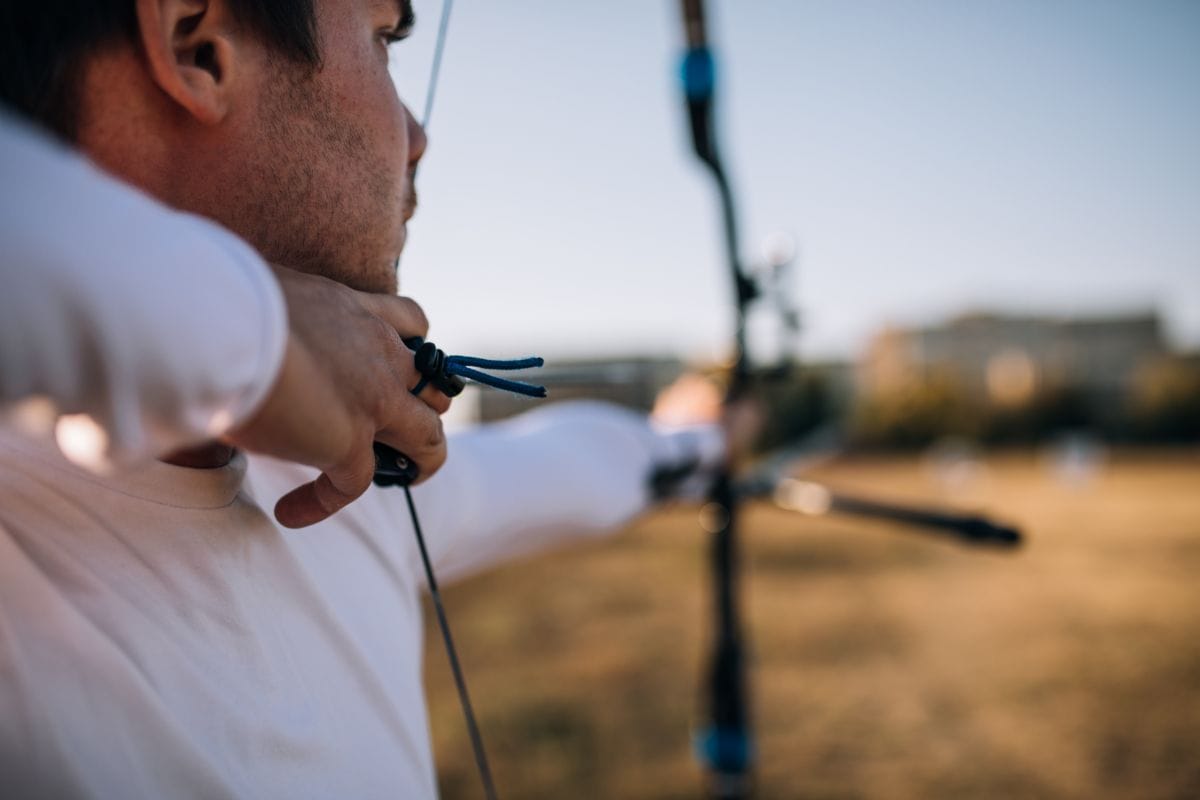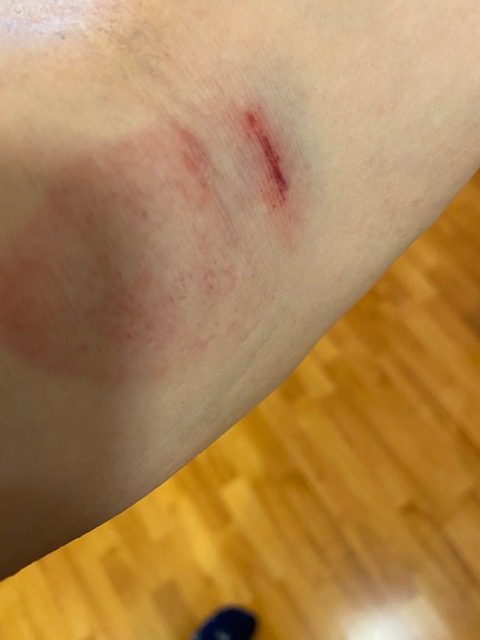Are you an avid archer seeking to maximize your arrow speed? Brace height, the distance between the bowstring and the grip, plays a pivotal role.
A shorter brace height equals greater arrow speed but at the expense of forgiveness. Bow design, arrow weight, draw length, shooting form, and environmental conditions influence this delicate balance.
Discovering your optimal brace height requires experimentation and guidance from experienced archers or bow technicians.
Get ready to unlock the secrets of arrow speed and precision.
Contents (Jump to Topic)
ToggleThe Relationship Between Brace Height and Arrow Speed
This shorter distance allows for a longer power stroke, transferring more energy to the arrow and increasing arrow speed.
Basically, the arrow is “connected” to the string for a longer time – therefore can “take” more energy.
However, it is important to note that while a shorter brace height can lead to higher arrow speed, it may also affect the bow’s forgiveness and accuracy.
Why? Because a shorter brace height can make the bow less forgiving of slight variations in grip and release. The longer the arrow is “connected” to the string – the more time you have to screw up.
So, finding the optimal brace height that balances arrow speed and accuracy is essential for maximizing overall performance.
How Shorter Brace Height Affects Arrow Speed
To achieve higher velocities, you’ll need to consider a shorter distance between the bowstring and the deepest part of the grip.
A shorter brace height can have a significant impact on arrow speed. Reducing the brace height increases the power stroke length, allowing more energy transfer to the arrow.
It should result in a faster arrow speed. However, it’s important to note that a shorter brace height may have drawbacks. It can reduce forgiveness and accuracy, requiring a more precise shooting technique.
The Trade-Off Between Arrow Speed and Accuracy With Shorter Brace Height
If you shorten the distance between the bowstring and the deepest part of the grip, you’ll notice that your arrow will fly faster, but you may have to sacrifice some accuracy in return.
This trade-off between arrow speed and accuracy is important when choosing the optimal brace height for your bow.
Here are three key points to keep in mind:
- Increasing arrow speed: Shorter brace heights allow for a longer power stroke, resulting in higher arrow speeds.
- Decreased accuracy: However, the shorter brace height can make your shot less forgiving, as minor inconsistencies in grip and release can significantly impact arrow flight.
- Finding the balance: Finding the right balance between speed and accuracy that suits your shooting style and preferences is crucial.
The Impact of Longer Brace Height on Arrow Speed
Experimenting with larger brace heights can provide you with a slower shot, but it may enhance the forgiveness of your shooting experience.
The arrow “leaves” the string earlier – less time for you to mess things up by movement etc.
But. Increasing the brace height gives the bow less time to transfer energy to the arrow. It can result in a smoother release and reduced hand shock.
However, the trade-off is a decrease in arrow speed.
How Longer Brace Height Improves Forgiveness
Increasing the distance between the bowstring and the deepest part of the grip, you can experience a more forgiving shooting experience. I recommend doing that in ½ Inch steps until you find your ideal brace height.
When it comes to brace height, a longer distance offers several advantages:
- Increased Forgiveness: With a longer brace height, there is a smaller margin for error regarding grip and release consistency. This forgiving nature allows minor mistakes to be “absorbed,” resulting in improved accuracy and minimal impact on arrow flight.
- Reduced Hand Shock: Longer brace heights help dampen the vibration and shock upon release. Hand-shock reduction leads to a smoother and more comfortable shooting experience.
- Enhanced Bow Tuning: A longer brace height provides more leeway in bow tuning adjustments. Allowing archers to fine-tune their equipment for optimal arrow flight minimizes tuning difficulties and maximizes performance.
A longer brace height can significantly contribute to a more forgiving shooting experience, making it an excellent choice for beginner archers seeking improved accuracy and comfort.
I´d recommend wearing an arm guard – String slap is a thing here.
read.. how not to hit your forearm
Bow Design Factors Influencing Brace Height’s Impact on Arrow Speed
When considering the impact of bow design (i.e. recurve bow, compound bow, long bow) on arrow speed, you’ll find that factors such as cam system and limb stiffness play a significant role in how brace height affects performance.
A more efficient cam system can maximize arrow speed even with a longer brace height. Stiffer limbs can generate more power and increase arrow speed, compensating for the potential loss due to a larger brace height.
The Role of Arrow Weight and Spine in Brace Height’s Effect on Arrow Speed
To optimize your bow’s performance, consider the weight and spine of the arrows you use, as they can influence how brace height affects arrow velocity.
When it comes to arrow weight, heavier arrows tend to be slower but offer better penetration, while lighter arrows are faster but may sacrifice some penetration power.
The spine of the arrow refers to its stiffness, and a higher spine value means a stiffer arrow.
A stiffer arrow can better handle higher poundage bows and shorter brace heights, increasing arrow speed.
How Draw Length and Shooting Form Influence Brace Height’s Impact on Arrow Speed
You can adjust your draw length and shooting form to determine how brace height affects the velocity of your arrows.
By increasing or decreasing your draw length, you can change the power stroke of the bow, which in turn affects the arrow speed.
A longer draw length can result in a longer power stroke, leading to higher arrow velocity. Conversely, a shorter draw length reduces the power stroke, resulting in lower arrow speed.
Similarly, your shooting form is crucial in how brace height affects arrow velocity. Your anchor point, release technique, and follow-through can all impact energy transfer from the bow to the arrow.
Experimenting with different draw lengths and shooting forms is a good way to find the optimal combination that maximizes arrow speed while maintaining accuracy.
For example, a 30″ draw length with a 7″ brace height means you’ll draw the bowstring 23″. With the same draw length but a 6″ brace height, you’ll draw 24″.
- Shorter brace height = longer draw, more room for mistakes, but higher arrow velocity
- Greater brace height = arrow leaves bow string faster, less time to mess up, generally slower.
The Influence of Release Aid Type on Brace Height’s Impact on Arrow Speed
A different release aid can affect the brace height and arrow velocity relationship. The type of release aid you choose is crucial in power transfer efficiency from the bow to the arrow.
Here are three important factors to consider when it comes to the influence of release aid type on brace height’s impact on arrow speed:
- Mechanical Release vs. Finger Release: A mechanical release, such as a wrist strap release, can provide a more consistent release, resulting in a more efficient transfer of power and potentially higher arrow speeds. On the other hand, a finger release requires more finesse and may result in slightly lower arrow speeds.
- Trigger Sensitivity: Different release aids have varying levels of trigger sensitivity. A release aid with a sensitive trigger can result in a quick and clean release, maximizing the efficiency of power transfer and potentially increasing arrow speed. However, a less sensitive trigger may offer more control over the release but slightly decrease arrow speed.
- Adjustability and Tuning: Some release aids offer adjustable features, such as trigger travel and tension. These adjustments can affect the timing and smoothness of the release, which in turn can impact arrow speed.
Environmental Conditions and Their Effect on Brace Height’s Impact on Arrow Speed
Environmental conditions play a role in the performance of your bow and the speed of your arrows.
Temperature affects the elasticity of the bowstring and the limbs, which can impact the power transfer to the arrow.
Humidity can also affect the bowstring’s elasticity, with higher humidity levels potentially causing the string to become more pliable.
String Length and Brace Height
Bowstrings have twists. By adding or removing twists, you can adjust the brace height.
You can change the brace height of your recurve bow by unstringing the bow, removing the bottom loop, and then twisting or untwisting the string. You can increase your brace height by about ¼ inch by giving the bowstring two twists.
Be careful if you´re using flemish strings. Too much untwisting will get it unraveled!







